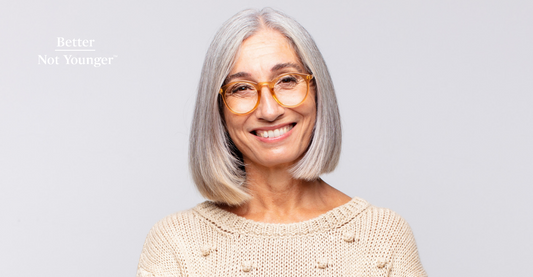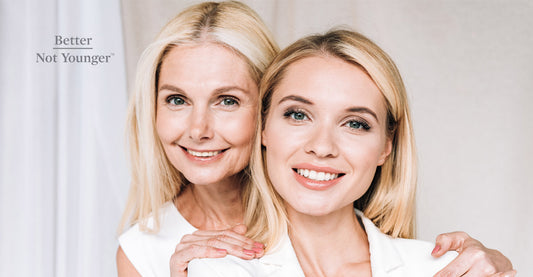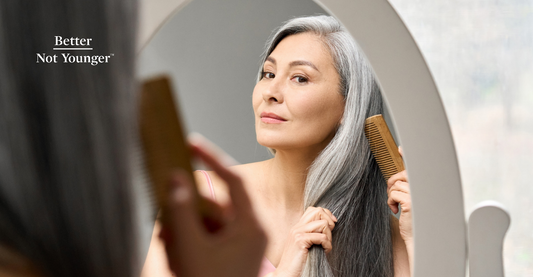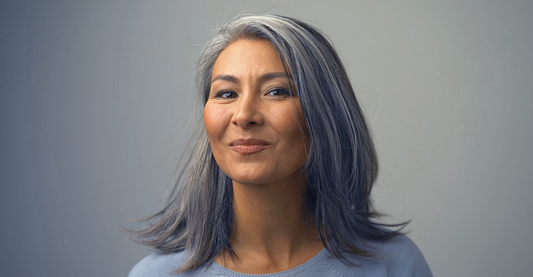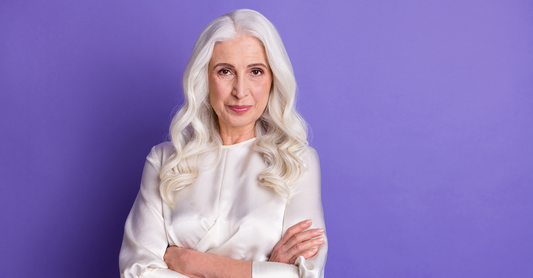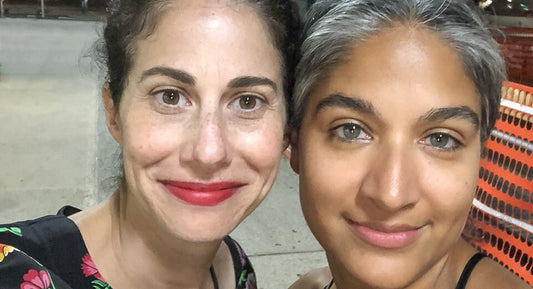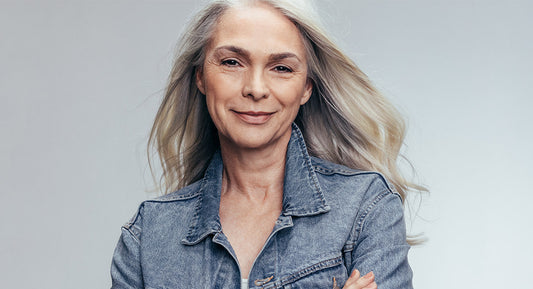The Better Blog
What’s the Best Way to Transition to Gray Hair?
Transitioning from your dyed or natural hair color is typically slow and gradual. It’s a process that may take months, sometimes a year, depending on your hair’s length when you start. Patiently waiting for your hair to go full gray as a part of aging can often be the most challenging part. Most of us would love to avoid the gray roots and dry, wiry strands that can come with it. But the best method for gray hair transitioning isn’t as tricky as you’d think.
Why Anyone Can Benefit from Purple Shampoo
If you’ve ever taken an art class, you might remember that purple lies opposite yellow on the color wheel. It is the coolest color on the spectrum, while yellow is on the warm end. Purple shampoo is a tone-correcting hair-care solution intended to neutralize brassy or yellow hues using crushed violet pigments.
But did you know that purple shampoo can benefit anyone’s locks regardless of their color or condition? Whether it’s natural or dyed, damaged or healthy, light or dark, purple shampoo can infuse vibrancy and volume into your hair.
What Are Some Common Issues with Gray Hair?
While your hair is unique, the changes in quality, thickness and texture you experience when going gray are common issues. Luckily, the right products, consistency in using them and a little determination are all you need to make your silver strands shine.
I Want to Start Coloring My Grays… What Are My Options?
Whether your hair is just starting to gray or you’ve been rocking a full head of stunning silver strands for the last few years, the question remains the same: To dye or not to dye?
If you’ve decided that dyeing your hair is the right move for you, then you probably have a few questions, such as:
- Should I lighten my grays or darken them?
- Do I want to completely cover my gray? Or should I make my natural grays look more like highlights in darker hair?
- Does my skin’s undertone matter? If it does, how do I determine mine so that I choose the right hair color for my skin tone?
Let’s pause here for a moment because this last one is super-important and will become a common theme throughout your hair-coloring journey. While your skin’s undertone is probably not the first thing that pops into your head when contemplating your new hair color, it’s actually more significant than you might think. Have you ever heard horror stories from friends who’ve left the salon, looked in the mirror, and felt that something about their new color was just… off? This might have been due to them or their stylist not taking their undertone into account.
Fear not: All colors come in both warm and cool tones, so your skin’s undertone shouldn’t keep you from getting the hair color you really want. It just might mean getting a different version of brown, blonde or purple. Yes, we said purple—more on that later.
Can a Hair Mask Help Me To Manage Gray Hair?
When your hair turns gray, its color is not the only thing that changes. Thanks to a dry, wiry texture and persistent brassy tinge, gray strands can be notoriously hard to manage.
Thankfully, the right mask used once or twice a week is an effective solution to restore shine, brightness, and manageability to stubborn grays.
Better Not Younger's Silver Lining Purple Butter Masque has:
- An ultra-hydrating formula that helps you regain proper moisture balance and infuse new life into your dull, brittle locks.
- A purple hue to neutralize the yellow brassiness brought on by environmental pollution and hair product dyes.
How to Transition to Gray Hair Gracefully
In 1956, Shirley Polykoff coined the ad slogan “Does she … or doesn’t she” for Clairol, removing the stigma of dyeing one’s hair and unleashing millions of women to openly and confidently choose what color they wanted their hair to be.
Fast-forward to 2020, where the latest slogan might just be “To dye … or not to dye” as lockdowns caused many women to start embracing their grays.
Being in the hair-care business, we just had to take a closer look. We caught up with two 40-something female entrepreneurs whose gray-hair journey began in their mid-20s. Longtime friends, colleagues and now cofounders of Sway, a visual content studio in New York City, Nicole Hyatt and Rebecca Karamehmedovic share many loves: photography, dogs, travel and tacos—but their silver strands are certainly not one of them. In fact, their opinions on the matter couldn’t be more different. Nicole began coloring her hair the moment she spotted her first few grays while Rebecca has never once concealed her silver strands.
We get to the root of the issue. Here’s what they had to say:
Is Volumizing Shampoo Good for Gray or Silver Hair?
How To Make Your Gray Hair Shine Naturally
You love and boldly embrace your gray hair as a celebration of a new you. Then one morning, a glance in the mirror lets you know the celebration is over — your silvery strands have become brassy and dull. Lack of shine is one of the most common complaints women make about their gray hair. Shine and texture are both affected by internal and external factors, and your slate locks can quickly lose luster without the proper care.

